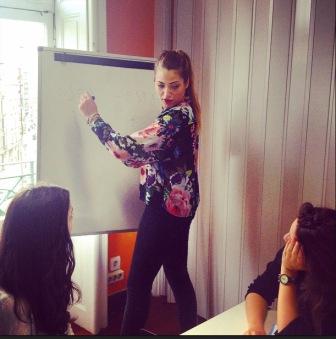Teachers of Spanish in secondary schools in Spain
It is true that the social and economic situation of the country has influenced the development of studies and methodologies for teaching Spanish as a foreign language; and precisely this is shown in the founding of the Cervantes Institute in 1991 and other institutions such as the Instituto Hemingway. From then until now there has been a significant evolution and, methodological adaptations have evolved into methods created specifically for teaching Spanish, adjusted to the different realities (specific groups, specific purposes ...).
Given the heterogeneity of the groups to which different methods are targeted, it is difficult to make an overall consideration of all of them. So in this post I will briefly comment some aspects that I think should be taken into account in the teaching of Spanish as a foreign language enrolled in Spanish secondary schools. In this regard it is noteworthy that there is a need actual language learning by students. Therefore, they are often willing to learn and excel. In any case, far from forming a homogeneous group and beyond the need to study different subjects in Spanish, each student of a different social reality. What they all share is a communicative purpose that allows them to successfully confront and overcome situations of everyday life (relationship with colleagues / teachers, see a doctor and explain why they occur, shopping, etc.).
This requires from a communication based on meaningful contexts that reproduce their daily life approach.
Another key to maintaining motivation of these students aspect is to involve them in the learning process by showing interest and curiosity in their respective languages / cultures. Let them be the ones to explain some of their language / culture. Media-advanced levels are usually students themselves who, by identifying something clearly without specifically ask, are launched to explain how that works in their respective languages or how to address these situations from a nonverbal communication in their respective cultures . To do this, it is very useful knowledge that may have the teacher other languages / cultures. When the student handles more than one language these associations tend to be more frequent and accurate.
We can not forget that, despite the common features that can present a group of adolescent students in a Spanish secondary school, there is a big difference as the mother tongue of each (Portuguese, French, Chinese, Swahili ...). Therefore, I can not conclude without saying that, even presenting some common features, with exceptions, are usually very heterogeneous groups in which costly find a manual guide as a guide for everyone.
As for what I have given me this advanced course ELE teachers signal that has helped me to systematize / order some techniques that had been applied as I was presenting the need in the classroom. Also, he has revealed the existence of "literature" on the teaching of Spanish for Specific Purposes (especially dedicated to the Spanish and not adapted from other languages) and access to websites and blogs which are shared concerns, suggestions and exercises produced by teachers to address the needs that have arisen them.



 English
English Español
Español Deutsch
Deutsch Français
Français Italiano
Italiano Ру́сский
Ру́сский 

